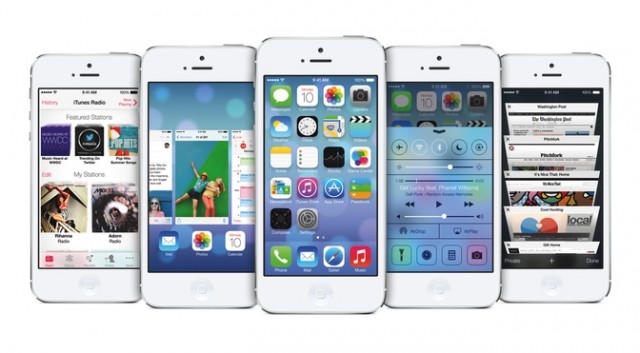Apple has just officially released iOS 7. If you have a compatible device (listed below), simply visit your device’s Settings menu, click to General, and then Software Update. You can also update to iOS 7 via iTunes 11.1, which was just released on the Apple website (and you will need it if you wish to sync your device via USB.) The original post is below, if for some reason you wish to download iOS 7 in a different way.
Updated: If your iPhone or iPad won’t download iOS 7, it’s almost certainly because Apple’s servers are being completely hammered. We finally managed to get a device to update, though it took quite a few failed attempts. It’s probably worth waiting a few hours until the deluge has calmed down, unless you want to sit there and constantly hit retry. Once you’ve installed iOS 7, check out our guide to all of its new features.
While iOS 7 won’t be released until September 18, it’s possible to download and install iOS 7 today, and install it on your existing iPhone or iPad. You can install iOS 7 on the iPhone 4, 4S, and 5, the fifth-gen iPod Touch, and every iPad and iPad Mini except the original iPad. Installing iOS 7 will give you access to some exciting new features, such as improved multitasking and AirDrop, and the complete visual overhaul will of course make your Apple device look completely different (and cause all of your friends to gape jealously).
There are two routes that you can take to install iOS 7 on your iDevice: You can either sign up for an Apple developer account, which costs you $100 per year, or you can install one of the leaked iOS 7 golden masters. The safest option is to sign up for the developer program, and if you split it between a few friends (you can install iOS 7 on up to 100 devices), it can be very cheap. Once you’ve signed up, you need to add your device’s UDID as a registered test device, and then go ahead and download the correct iOS 7 image for your device from the Apple developer portal. Once you have the image, skip to the installation section below.
If you don’t have $100 to spare, downloading a leaked golden master is a good second option — and, depressingly enough, it’s actually easier than installing the legitimate version. To install iOS 7, grab the correct image for your device from the list below, and then proceed to the installation section.
iOS 7 and iTunes 11.1 golden master images
If you don’t know which model you have, the model number can be found on the back of your iDevice. Bear in mind that some of these links may not work by the time you read this story (but a bit of googling can usually find you an alternative link). Also note that you will need iTunes 11.1 (link below) if you want to sync to your computer — but if you don’t want to install it, iCloud sync works just fine.
- iPhone 4 (GSM)
- iPhone 4 (GSM Rev. A)
- iPhone 4 (CDMA, Model A1349)
- iPhone 4S (Models A1431 & A1387)
- iPhone 5 (Model A1428)
- iPhone 5 (Model A1429)
- iPad 2 (WiFi)
- iPad 2 (Rev. A)
- iPad 2 (WiFi + GSM, Model A1396)
- iPad 2 (WiFi + CDMA, Model A1397)
- iPad 3 (WiFi, Model A1416)
- iPad 3 (WiFi + GSM, Model A1430)
- iPad 3 (WiFi + CDMA, Model A1403)
- iPad 4 (WiFi, Model A1458)
- iPad 4 (WiFi + GSM, Model A1459)
- iPad 4 (WiFi + CDMA, Model A1460)
- iPad Mini (WiFi, Model A1432)
- iPad Mini (WiFi + GSM, Model A1454)
- iPad Mini (WiFi + CDMA, Model A1455)
- iPod Touch (Fifth-generation)
- iTunes 11.1 Beta
Before you continue, make a backup of your device using iTunes. If anything goes wrong, you will want to boot your phone into DFU mode and then restore the backup. These images seem to be the real deal and safe to use, but we haven’t tested all of them, and of course you use them at your own risk.
With your iOS 7 image downloaded (if it’s a DMG file, you will need to open it up and extract the IPSW file), plug in your iDevice, and then open up iTunes. Select your device’s Summary tab. Under OS X, hold down Option and click Restore; in Windows, hold Shift and press Restore. Select the IPSW file from the dialog that pops up, and voila: Your iDevice will update to iOS 7. Once the update has completed, you may need to restore your device from a backup (and remember, you will need to update to iTunes 11.1).
Voilà: Your iPhone or iPad is now running iOS 7. Be sure to read our iOS 7 guide so that you don’t miss any of the cool new features.









































